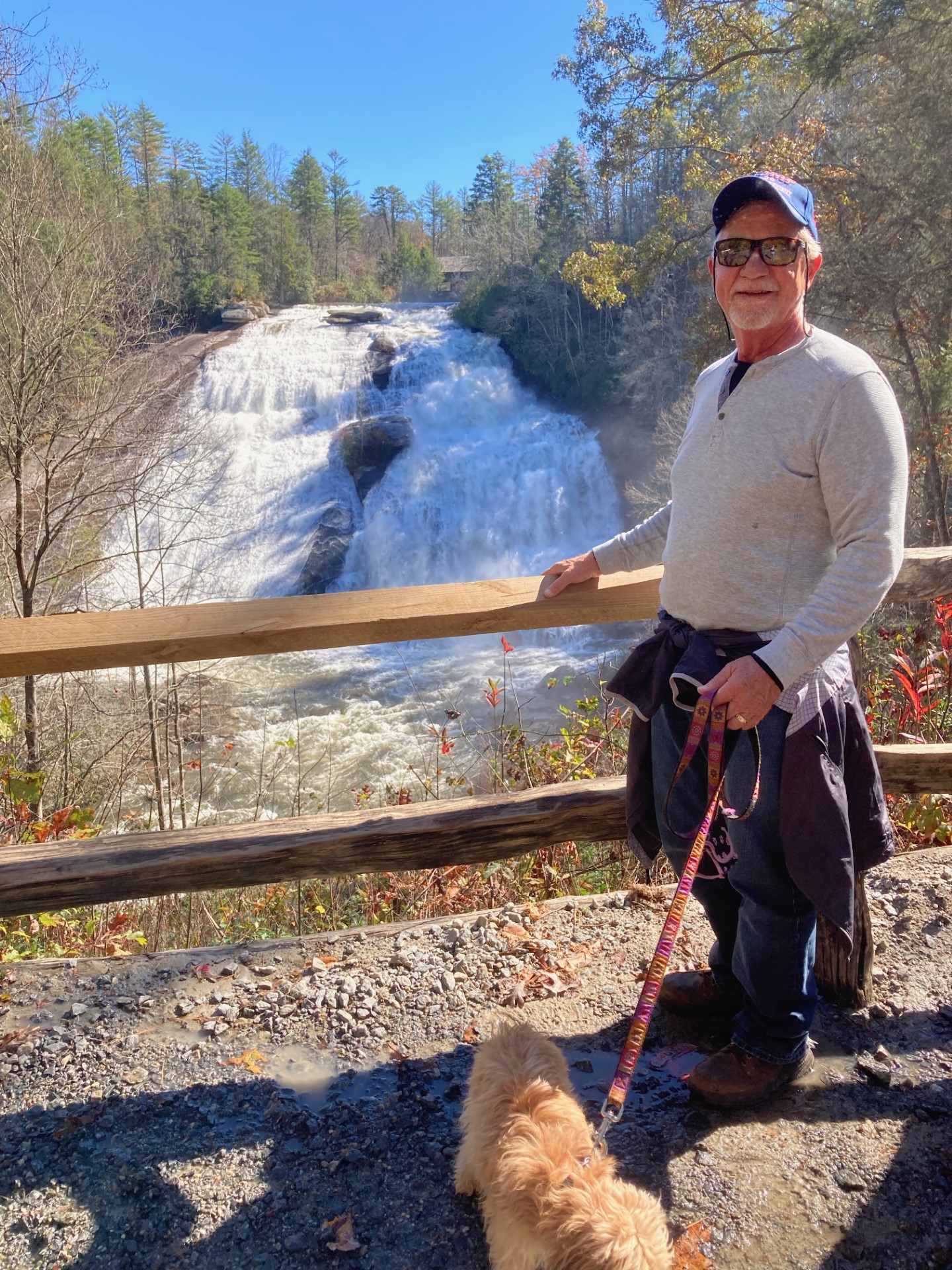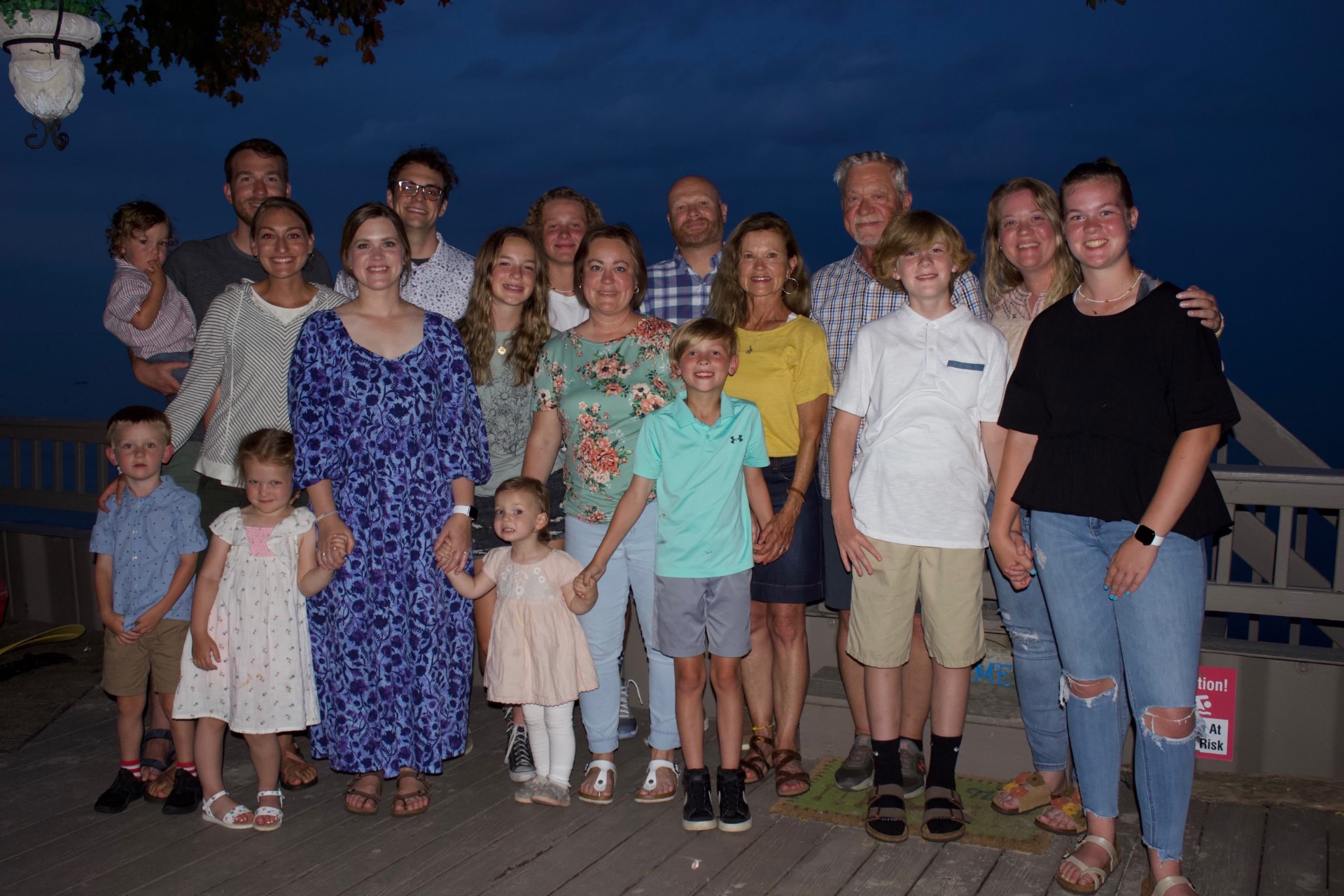The day started like any other day for Dennis Robertson.
He got up, had breakfast and hit the gym for his biweekly workout. But when he returned home, he felt something wasn’t right.
“I pulled into the garage and started feeling heaviness and shortness of breath – almost like heartburn in my chest,” Robertson said. “I also felt a little flushed. I initially thought maybe I had pulled something – something was different.”
He went into his house for a seat and a glass of water. After 15-20 minutes went by, he still felt unwell.
"I said to my wife, ‘Let’s go and get this checked out. It’s just not normal,’” Robertson said.
They headed to Carle Health Express Care on Knoxville Avenue in Peoria. Robertson remembers he didn’t experience much pain but more of a “different” feeling.
He described his symptoms to team members on-site, and they quickly determined the need to run tests, including an electrocardiogram (ECG) to measure the electrical activity in Robertson’s heart.
Carle Health physician Michael Johnson, MD, promptly visited him in the exam room.
“From the time he walked through the door to when he got his ECG was under 10 minutes. I saw immediately he had an acute inferior myocardial infarction,” Dr. Johnson said. “We alerted him and his family, called for an ambulance and contacted the emergency department.”
“He came in and said, ‘You are having a heart attack,’” Robertson said. “Those were the kind of words where life changes. You suddenly feel different – you don’t think it's going to be you and don’t think this is what it should feel like.”
An emergency angioplasty
The emergency department issued an ST-elevation myocardial infarction (STEMI) alert, indicating Robertson was likely dealing with a clogged artery and needed immediate assistance.
An ambulance brought him to the emergency catheterization lab at Carle Health Methodist Hospital. By the time he entered, Structural Heart Program Director Surya Chaturvedula, MD, and his team had seen the ECG results and prepared for Robertson’s arrival.
“Minutes mean muscle – every minute we save from having a clogged artery prevents heart muscle damage and, in turn, improves survival and avoids long-term adverse effects of having a damaged heart muscle,” Dr. Chaturvedula said. “The heart muscle’s job is to pump blood to all the vital organs of the body. If you lose such muscle strength, the pump becomes ineffective and puts you at risk for congestive heart failure, increased likelihood of heart rhythm problems and sudden death.”
Robertson was prepped for an angioplasty – a minimally invasive procedure where the physician inserts several types of equipment, including wires and balloons – to restore flow in the clogged artery. They then place a stent, which serves as a scaffold to ensure unrestricted flow.
Dr. Chaturvedula said the ECG results were suggestive of a clogged heart artery supplying the lateral wall of the heart. The team started their standard approach of accessing the artery in the wrist to access the blood vessels that supply the heart.
“We had an index of suspicion going in and did find that his circumflex artery – the artery that supplies the left side of the heart (lateral side) – was the culprit,” Dr. Chaturvedula said.
The artery was 100% blocked. The team performed the angioplasty and carefully placed the stent in Robertson’s heart to open the artery and restore flow.
Robertson was awake for the entire procedure and followed along with Dr. Chaturvedula by watching the progress on a TV monitor.
“The technology was amazing, and because of their expertise, I felt no pain, trauma or issues. It was top-notch,” Robertson said. “He was telling me what was going on and kept asking me – it seemed like every minute – what the pain was at that moment. They had me focus on what I was feeling. He described everything, and I could see it on the screen.”
“Once we gained access to the artery, we injected contrast dye, used to opacify the blood vessels and employed X-rays to take pictures. Hence, if there is abrupt cessation of flow, a clogged artery is diagnosed, and we then focus our attention to restore flow,” Dr. Chaturvedula said. “We also have additional intravascular imaging using an ultrasound beam that helps us visualize from within the blood vessel. It helps further evaluate by characterizing the blockage, measuring the size of the vessel and selecting the ideal landing zones for our stent.”
The procedure took less than half an hour.
Robertson recalled as soon as they expanded the balloon and restored flow to the artery, everything changed.
“The instant he released the device, the pain just basically all went away. My breathing also came back and felt more normal,” Robertson said. “All the anxiety I was feeling came down immensely.”
“As soon as the artery is opened, the symptoms fade very rapidly. It’s very dramatic and rewarding to perform such a procedure and observe the patient improving instantaneously,” Dr. Chaturvedula added.
Robertson said he and his family couldn’t believe how quickly everything went.
“They had only just gotten settled in the waiting room,” Robertson said. “My wife was called in and thought she’d be told it would take a few hours. She thought he was explaining what they were going to do. But he said, ‘No, no – this is a picture of what WAS done.’”
Robertson spent a few nights at Carle Health Methodist for further treatment and monitoring before he returned home.
Robertson's recovery
He now attends regularly scheduled cardiac rehabilitation sessions to help track his heart activity and exercise.
“I’m feeling good. I’m still regaining my strength and stamina, but it’s getting better and better every day. I’m getting back to enjoying activities and traveling. We’re on the road quite a bit, and I’ve gotten back to that routine,” Robertson said.
Robertson credits two things for his recovery – the speed and precision of his care teams and the faith and support of his family.
Dr. Chaturvedula and Dr. Johnson echoed his sentiments about the teamwork involved in providing lifesaving care quickly.
“It’s an incredible team effort. One person will grab the technology we need, while another might assist with making the emergency call. We delegate things very quickly,” Dr. Johnson said.
“It is almost like a NASCAR team. Everyone knows what they are doing, and you need to get it done quickly, yet safely,” Dr. Chaturvedula added. “We complement each other's roles and work as a team with a unified goal of helping the patient in a timely manner. Dennis’s case shows that when everything goes well and as planned, we can have a great result and in a shorter time."
Robertson said as he continues to get better, he spends a lot of time with his family and grandkids. A group of them are preparing for a mission trip to the Dominican Republic this month.
He said he is grateful to still do the things he loves with the people he loves.
“I exercise regularly and eat healthily. I thought I was doing the things I should to avoid a situation like this, but this was something that makes you take an inventory of what your situation is – you start thinking about everything. It’s a life-changing event,” Robertson said.
Categories: News, Article, Story
Tags: cardiology, carle, health, heart, hospital, methodist, stemi
